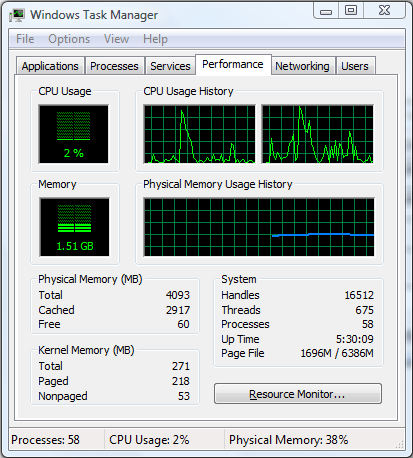Used a flat head bit to drill through IHS to core (pic 1). Shiny part of the hole on left is top die, on right barely drilled into top of die/mold compound, not deep like it looks. Spent about 4 hours testing so far...may make vids this weekend if have time, have couple made, but not the interesting stuff.
The idle temps above in post 2429 are right on the mark.
The magnitude of the gradients is confirmed, their location I was wrong about. There is a significant layer of die/mold compound over the DTS core and cpu sensors, and the majority of the gradient (60-65%) occurs across that layer to top of die, the rest of the gradient occurs across IHS and tim1.
................................Sensor die temp.........thermocouple DIE temp............Thermocouple IHS temp
NO HEATSINK
IDLE 6x266, 1.1v-----100C (DTS=0)------------------97-98C----------------------------94-95C
LOAD 6x266, 1.1v-----77C-----------------------------70C--------------------------------65C
stock cooler
LOAD 9x333, 1.2V-----68C-----------------------------58C--------------------------------51-52
at higher volt setting to allow higher temp...load returns to idle, once again software sensor reads only few C higher than thermocouple to top of die, (2-3C gradient at idle low volts, confirmed by varying voltage and watching gradient changes).
The testing from the university (pic2 below or slide 22 link) http://www.ee.ucr.edu/~stan/papers/todaes07_softsen.pdf shows exactly the same thing regarding location of the gradients, despite testing a northwood. The only difference is the cpu diode in northwood with much larger die size better tracked IHS temp, whereas on 45nm the cpu diode better tracks core temp ?minus a few C.
The core and cpu sensors are close together on die on 45 and 65nm hence you see little gradient (5C max 65nm) from core to cpu sensor. You will not see core to core gradient for same reason plus there are multiple DTS sensors everywhere, only hottest reported, which makes gradients much less likely to be visible "horizontally".
This actually makes sense once you play around with it for awhile. You are actively cooling IHS, copper transmits heat instantaneously, hence relatively small gradient across IHS which has high conductivity close to cooling mechanism, but still gradient increases across the IHS with load as expected. The majority 60-65% of the gradient is without question through mold compound located over the die/cpu sensors and under the top of the die where thermocouple measures tem....just like pic in university shows, was with orthos anyways, but as the university pics show, the gradient location and magnitude can vary depending on loading program. The copper laden die/mold does have a high thermal conductivity around ~125 W/M*K, but still roughly 1/3 of that of copper 390 W/M*K, so top of die is well cooled via IHS compared to further into die.
Edit: also on weekend I will try to run an actual thermocouple die temp versus software core temp to get idea of slope error. But at idle, since half gradient is across IHS and half across mold and constant 5C gradient regardless of temp...frankly this can be done simply by measuring IHS temp and adding 5C to it...drilling hole with thermocouples is not necessary.




 Reply With Quote
Reply With Quote



 ) and it should be dirt cheap to make and still be pretty accurate for this purpose. Given what some people here are prepared to waste, um "invest", on graphics cards and SSDs, I can see a definite opportunity for someone with an engineering interest...
) and it should be dirt cheap to make and still be pretty accurate for this purpose. Given what some people here are prepared to waste, um "invest", on graphics cards and SSDs, I can see a definite opportunity for someone with an engineering interest...










Bookmarks